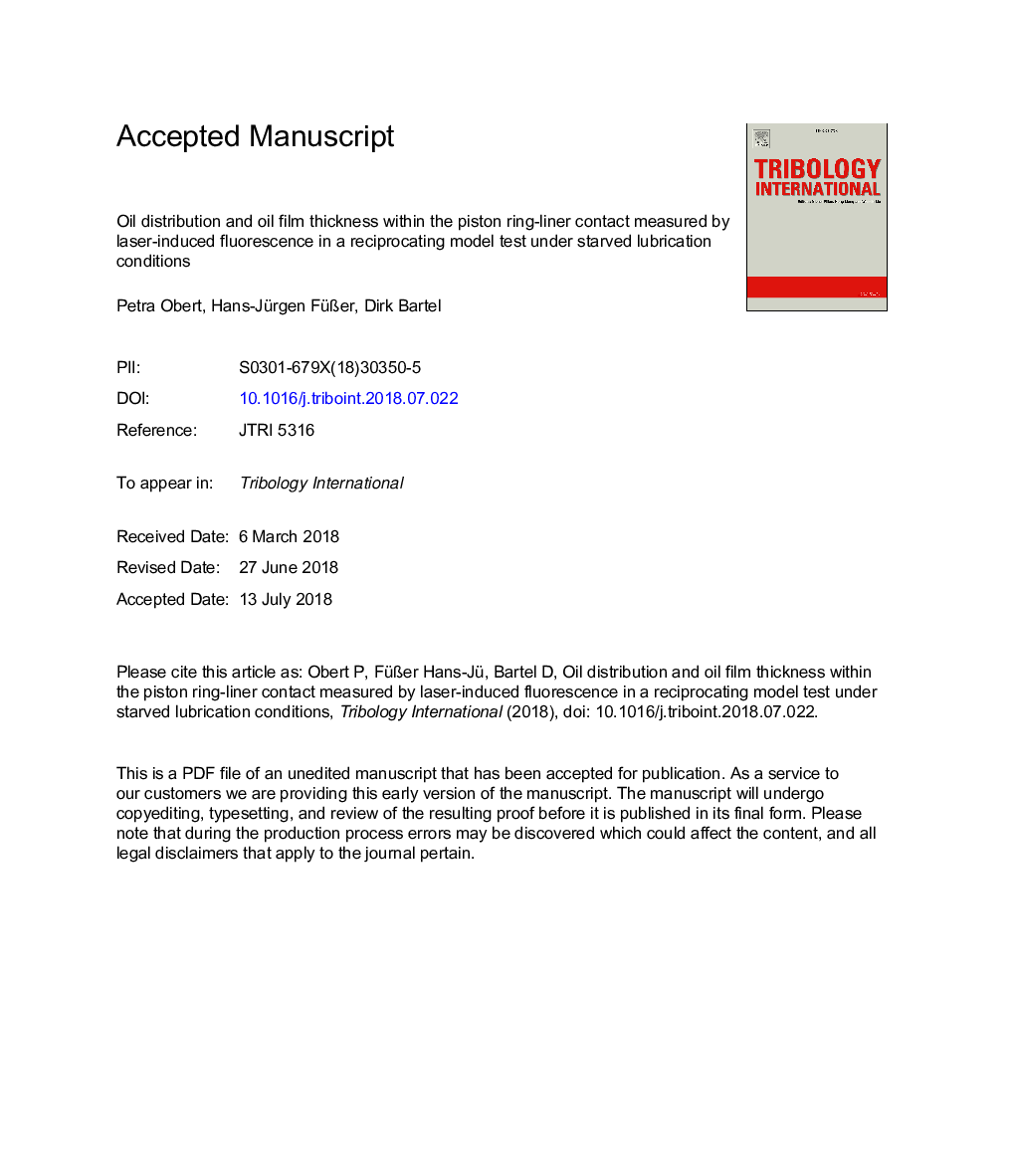| Article ID | Journal | Published Year | Pages | File Type |
|---|---|---|---|---|
| 9952537 | Tribology International | 2019 | 24 Pages |
Abstract
For a better understanding of the most important parameters and boundary conditions for scuffing initiation in the piston ring versus cylinder liner contact at fired top dead center of internal combustion engines, oil distribution measurements were performed by means of laser-induced fluorescence (LIF) on a reciprocating test rig. The 2D LIF measurements showed the change of the oil distribution in and around the contact area and verified that the oil available in the contact during the test decreased gradually over time until scuffing was initiated. For an improved quantification and increased detection limit of the oil film thickness within the contact, a sheet-of-light method was implemented, which enables evaluation of oil film thicknesses below 0.05â¯Î¼m and by which it was possible to study oil film thicknesses in the range of the surface roughness level of the counterparts. The decrease of the oil supply at the leading edge of the contact area just before scuffing initiation and the corresponding very low oil film thickness below the roughness level of the surfaces was quantitatively evaluated and proved that oil starvation was an important parameter for scuffing between piston ring and cylinder liner.
Related Topics
Physical Sciences and Engineering
Chemical Engineering
Colloid and Surface Chemistry
Authors
Petra Obert, Hans-Jürgen FüÃer, Dirk Bartel,
